Books
Books
in random order

Maquillage as Meditation: Carmelo Bene and the Undead
Partly a script, partly a personal voyage into the psyche of diseducation, this book happens, has happened and will happen on the 31st of October in a place called ‘The Palace of Melancholy’. In this temporal and spatial loop, the figure of Italian actor, author, director, philosopher, and public persona Carmelo Bene is summoned to hopefully be dismissed once and for all. Bene is looked at by the author reluctantly and yet resolutely through inner voices of dissent, shame and rebellion. He is imagined in gatherings that didn’t happen and read through an epistemology of contradiction. In Giannini’s company and support, Snejanka Mihaylova, Jacopo Miliani, and Arnisa Zeqo probe the walls of the Palace, looking for an exit.

The Years
The Years is a personal narrative of the period 1941 to 2006 told through the lens of memory, impressions past and present—even projections into the future—photos, books, songs, radio, television and decades of advertising, headlines, contrasted with intimate conflicts and writing notes from 6 decades of diaries.
Local dialect, words of the times, slogans, brands and names for the ever-proliferating objects, are given voice here. The voice we recognize as the author’s continually dissolves and re-emerges. Ernaux makes the passage of time palpable. Time itself, inexorable, narrates its own course, consigning all other narrators to anonymity. A new kind of autobiography emerges, at once subjective and impersonal, private and collective.
On its 2008 publication in France, The Years came as a surprise. Though Ernaux had for years been hailed as a beloved, bestselling and award-winning author, The Years was in many ways a departure: both an intimate memoir “written” by entire generations, and a story of generations telling a very personal story. Like the generation before hers, the narrator eschews the “I” for the “we” (or “they”, or “one”) as if collective life were inextricably intertwined with a private life that in her parents’ generation ceased to exist. She writes of her parents’ generation (and could be writing of her own book): “From a common fund of hunger and fear, everything was told in the “we” and impersonal pronouns.”
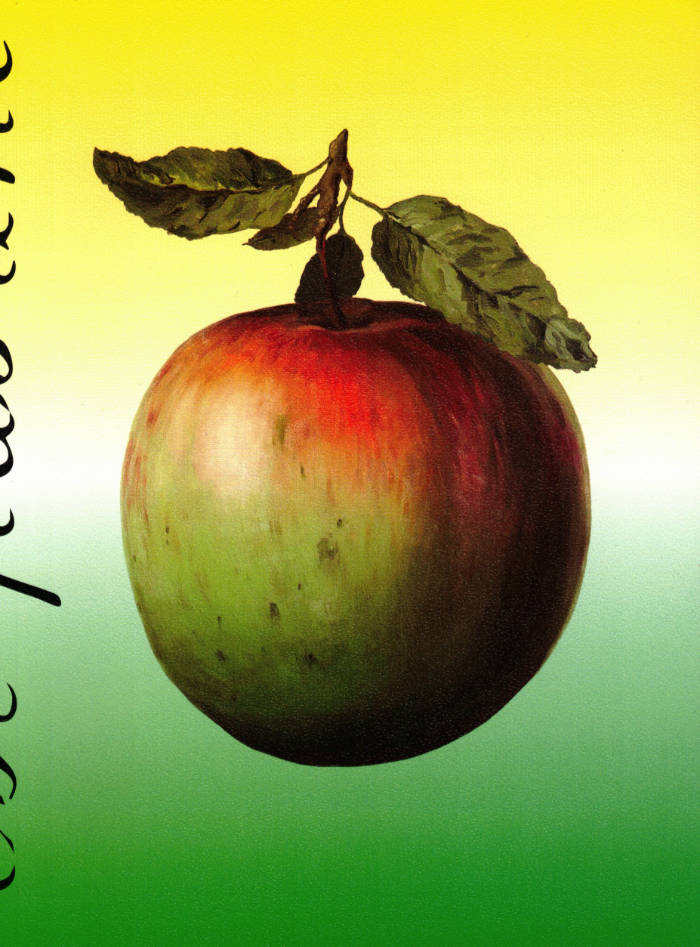
’Est Pas Une
By way of archiving, digital translation and reproduction, Philip Poppek extracts from Magritte’s word paintings twenty-six letters; segmental symbols of a textual system form an alphabet of a, with a familiar apple punctuating a provisional end to the sequence. A poetic correspondence with the letter a speculates on the prehistory of this alphabet, as though searching for some indication as to how we may have come to where we are now, in this ‘post-factual moment’.
Maybe at some point we fell into the foxes’ den, only to re-surface in a landscape of ruins. This book poses a number of necessary questions, perhaps beginning with: ‘Which feminine noun trails after the title script ‘est pas une?
Pomme? Pipe? Histoire? Communauté?

Be Good, If You Can't Be Good, Be Good at It Boom Boom Boom Boom
Rebecca Jane Arthur, Eva Giolo
BE GOOD, IF YOU CAN’T BE GOOD, BE GOOD AT IT Boom Boom Boom Boom is a publication composed of letters, notes, anecdotes,translations, stills and images: all traces of the creative process. The artists Rebecca Jane Arthur and Eva Giolo bring together their correspondence on the act of writing and of filmmaking, in all its complexity, struggles and playfulness.
The letters unpack themes such as the challenge of making personal work and the strength found in sharing vulnerability; the act of writing itself, language and translation; writing on moving images, on their practices and that of others; and the notion of a place as a container of memories, of interiority and the confrontation with home. The publication uses words and texts as images, and all images of persons or things are hidden. The publication acts as a negative to the films that we create, revealing that which cannot be.
Publisher: Les éditions du CVB
Publication Date: March 2021
Language : English & French
ISBN: 978-2-9601799-7-2
Softback, 311 pages, fully illustrated

A conversation, Nick Zedd & Marie Canet
“What happened to my book?”
This was the last email we received from Nick, in December 2021. A short, concise demand, which we responded to, telling him that the transcription was coming soon and that Marie was finalising the introduction. Little did we know, what Nick surely already knew: he was dying. The urgency should have given it away, but Nick was always blunt in our email exchanges.
Nick passed away on February 27th, 2022. We regret not getting the transcription to him while he could still edit it, so this book in your hands remains an unabridged testament.
The only thing he did edit were his final words, in an unsolicited email in September 2021:
“I was thinking about when you asked me if I had any final words, that it would be better to have me say: Freedom or death. At the crossroads. With a key.”
So we leave you with this; a homage to the legendary founder of the Cinema Of Transgression - a brilliant artist, a sharp mind, a loving father, a kind revolutionary, a boot stamping on the face of modernity forever, an underground phenomenon.
Nick Zedd, rest in peace.
[Note by the publisher.]
With a foreword by Goswell Road. Includes a conversation with Nick Zedd, and the manifesto 'Cinema of Transgression'.
Softcover (11 cm x 18 cm)
84 Pages
75 copies
Language : English

bruit
Hardcover, offset printing, 508 p., 31.8 x 25 cm. Printed by Cultura, Gent
Edition of 265 copies. A deluxe edition, accompanied by an original work numbered n/508 (oil pastel on paper A3), has been produced in 35 copies signed and numbered by the artist .

Bodies in Scattered Light
New series of paintings by the Swiss artist, that examine the role of humankind in nature and within its social fabric on a philosophical-anthropological level.
"I asked Andriu Deplazes if he had always wished to be a painter. No, he said. For a time, he had trained to be a classical musician, but turned away from music because there was something repellent about the need to demonstrate virtuosity. To be a virtuoso, as the moral world depicted in these paintings clearly shows, is not the same as having virtue. And yet, at the same time, there are still traces of virtuosity in Deplazes' practice: in the idealised landscapes that he renders, and in the easy depiction of animal life. It is only humans that he will not denigrate with such perfection. Their overpainted faces do not allow them to be captured as things, but rather present them as subjects. They elude categorisation because they are responding, in real time, to what they see in us." Adam Jasper
Born 1993 in Zurich, Andriu Deplazes lives and works in Zurich, Brussels and Marseille. His paintings create a kind of parallel cosmos that questions the habitual ways of seeing and expectations of the beholder. Wide landscapes in colourfully powerful large format are the setting for curious characters who sometimes melt into the vegetation around them or appear strangely remote from it. His work has been exhibited throughout Europe since 2015.

Malibongwe: Poems from the Struggle by ANC Women
In the late 1970s, Lindiwe Mabuza, a.k.a. Sono Molefe, sent out a call for poems written by women in anc camps and offices throughout Africa and the world. The book that resulted, published and distributed in Europe in the early 1980s, was banned by the apartheid regime.
Authorised by the editor, this re-issue of Malibongwe re-establishes a place for women artists in the history of South Africa's liberation. These are the struggles within the Struggle: a book that records the hopes and fears, the drives and disappointments, and the motivation and resilience of women at the front lines of the battle against apartheid. Here we see the evidence, too often airbrushed out of the narratives of national liberation, of a deep and unrelenting radicalism within women; of a dream of a South Africa in which not only freedom reigned, but justice too.

Livre d'images sans images (LP)
Mette Edvardsen, Iben Edvardsen
Livre d’images sans images by Mette Edvardsen & Iben Edvardsen borrows its title from a book by H.C. Andersen, also referred to as The Moon Chronicler. The book follows a conversation between a painter and the Moon, where the Moon describes to the painter what she sees on her journey around the world every evening, telling the painter to paint what she describes. “This conversation, as in the now obsolete meaning of the word (‘a place where one lives or dwells’), was the starting point for our work. Using the weather report as dramaturgy, (‘the moon did not show up every evening, sometimes a cloud came in between’), we have created and collected materials from our conversations in the form of recordings, text, voice, drawings, references, found images, loose connections, inspirations and imaginations, in the order they came to us. They are at the same time sources and traces, material and support for new imaginations or events to come.” The work consists of three different media: vinyl, paper and live performance.
Mette Edvardsen is a choreographer and performer eager to explore the performing arts as a practice and situation, also in relation to other media such as books and writing. This work is in collaboration with her daughter, Iben Edvardsen.
Published by Xing & Varamo Press
XONG collection – artist records XX10 (2023)
First edition, September 2023
Recorded and edited by Mette Edvardsen & Iben Edvardsen
Format white 12’ vinyl LP in cardboard sleeve
Released in a numbered edition of 300 copies, including collector’s edition of 25 copies, each accompanied by a unique poster hand drawn with black marker by Mette Edvardsen & Iben Edvardsen, 59,4 x 84 cm, folded, signed by the artists

Headwaters And Other Short Fictions
Compiling works from nearly five decades, Headwaters (and Other Short Fictions) provides the first comprehensive overview of the narrative and experimental writing of Lucy R. Lippard. While she is best known for her pioneering work as an art writer and activist, Lippard’s fiction helps frame her broader impact on contemporary culture.
Headwaters anthologizes over fifty short works, many previously unpublished. These often experimental vignettes showcase the range of her literary voice while also challenging our understanding of her oeuvre. Sometimes speculative or fragmented, yet always compelling, these pieces range from short-form narrative stories and conceptual fiction to visual essays and political prose.
Included are excerpts from two never-released novels, as well as collaborations with artists Robert Barry, Sol LeWitt, and Jerry Kearns.
Lucy Lippard is author of thirty books on contemporary art and cultural criticism. She has curated some fifty exhibitions in the United States, Europe, and Latin America.
Edited by Jeff Khonsary
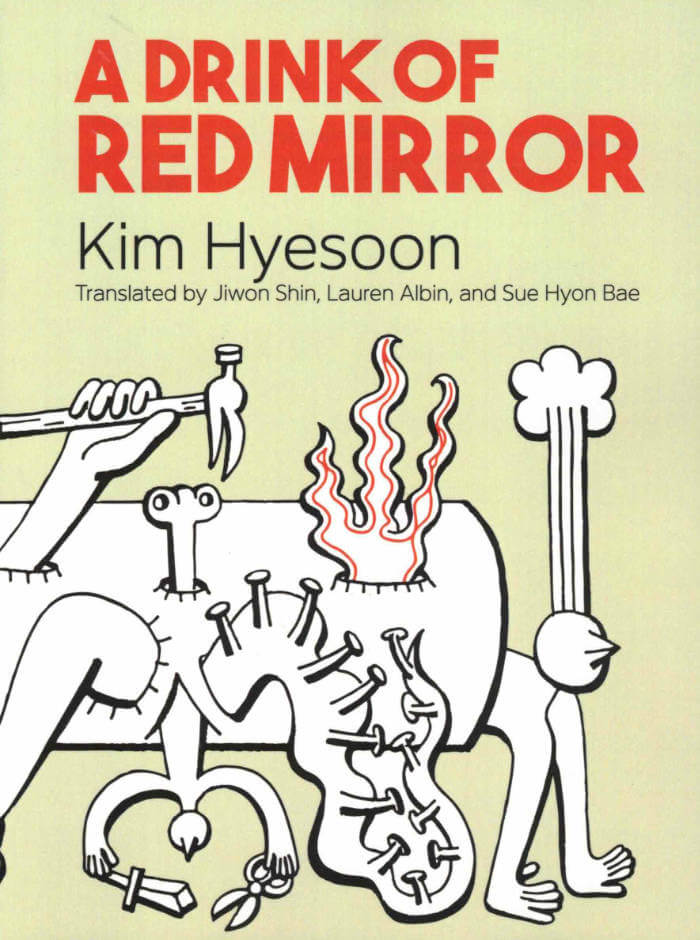
A Drink of Red Mirror
A landmark feminist poet and critic in her native South Korea, Kim Hyesoon’s surreal, dagger-sharp poetry has spread from hemisphere to hemisphere in the past ten years, her works translated to Chinese, Swedish, English, French, German, Dutch, and beyond. In A Drink of Red Mirror, Kim Hyesoon raises a glass to the reader in the form of a series of riddles, poems conjuring the you inside the me, the night inside the day, the outside inside the inside, the ocean inside the tear. Kim’s radical, paradoxical intimacies entail sites of pain as well as wonder, opening onto impossible—which is to say, visionary—vistas. Again and again, in these poems as across her career, Kim unlocks a horizon inside the vanishing point.
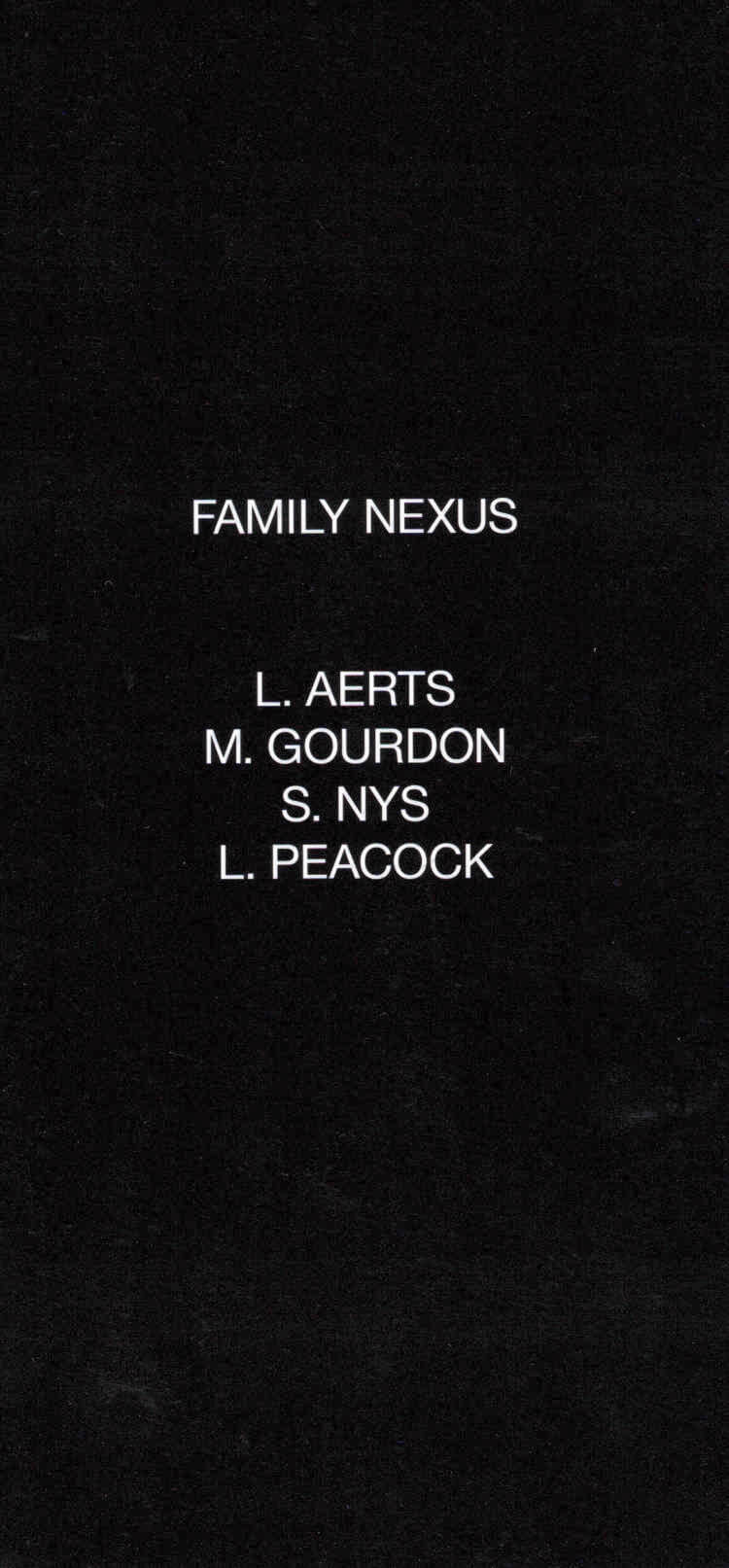
Family Nexus
Sophie Nys, Liene Aerts and 2 more
In April 2019, Sophie Nys presented the solo exhibition Family Nexus at KIOSK. In psychology, a family nexus stands for a vision that is shared by the majority of family members, often unconsciously and for several generations long, and is upheld in the context of events both within the family and in its relationship to the world. Among other, the monumental, stretched out net in the dome space was a symbol of this family dynamic.
Two years later, the theme is still working its way through the above mentioned heads. The shared interest of Nys, Gourdon, Aerts and Peacock leads to a collaboration in the form of a book that, just like the exhibition, can be read as a net of (un)coherent intrigues and knots in which no position can be neutral. They set up a network of characters. Together they represent all kinds of (human) connections. Family Nexus is a story about everyone and no one in particular. Who in this book is playing the role of the Nobody, the household’s so-called 'identified patient', or scapegoat, and which pots and pans has slipped through this character’s fingers?
Co-production: KIOSK and BOEKS.
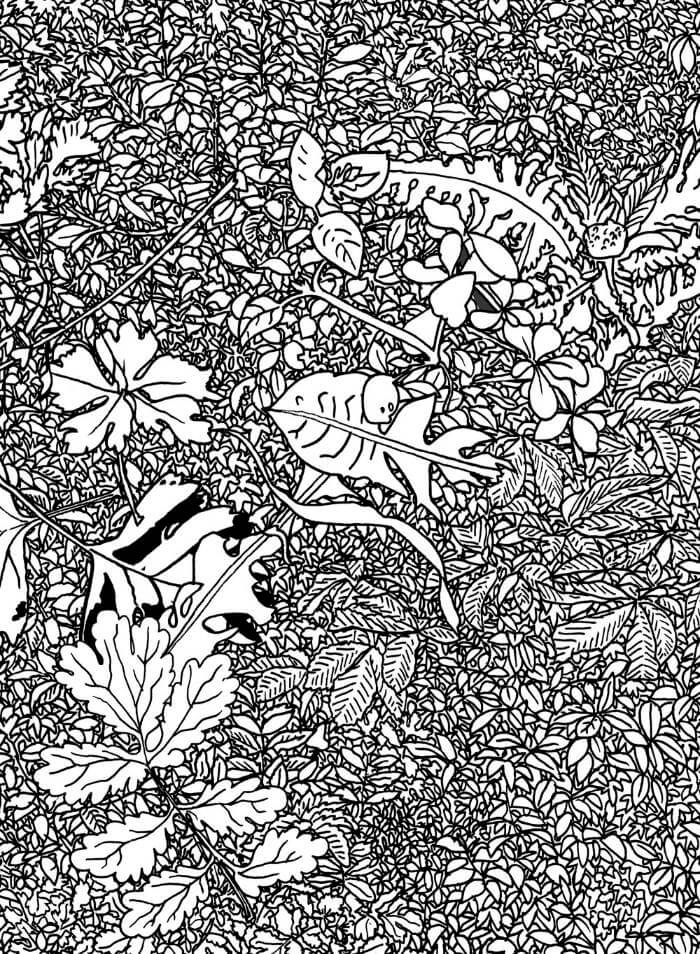
Mille Feuilles
Ingo Giezendanner's wild herbarium.
Density in the foliage, branching of the tree, structure in the bark: this book is entirely dedicated to organic, wild-growing greenery, mostly in black and white, but patterns emerge, the leaves become a frenzy, and grimaces from the thicket smile at us. The volume is deliberately overwhelming, making it impossible to get an overview. Rather this thick paperback serves as a reference for untamable, rampant, sprawling kraut.
Since 1998, Ingo Giezendanner, alias GRRRR, has been documenting the urban spaces in which he has travelled and lived. Apart from his native city of Zurich, his travels have taken him to diverse cities from New York and New Orleans to Cairo, Nairobi, Karachi and Colombo. Everywhere he travels, he captures his surroundings on location with pen on paper. His drawings have been presented in numerous magazines, books and animated films as well as in spacious installations and wallpaintings.

Night Philosophy
Night Philosophy is collected around the figure of the child, the figure of the child not just as a little person under the tutelage of adults, but also the submerged one, who knows, who is without power, who doesn’t matter. The book proposes a minor politics that disperses all concentrations of power. Fanny Howe chronicles the weak and persistent, those who never assimilate at the cost of having another group to dominate. She explores the dynamics of the child as victim in a desensitized era, when transgression is the zeitgeist and the victim–perpetrator model controls citizens. With an afterword by Chris Kraus.
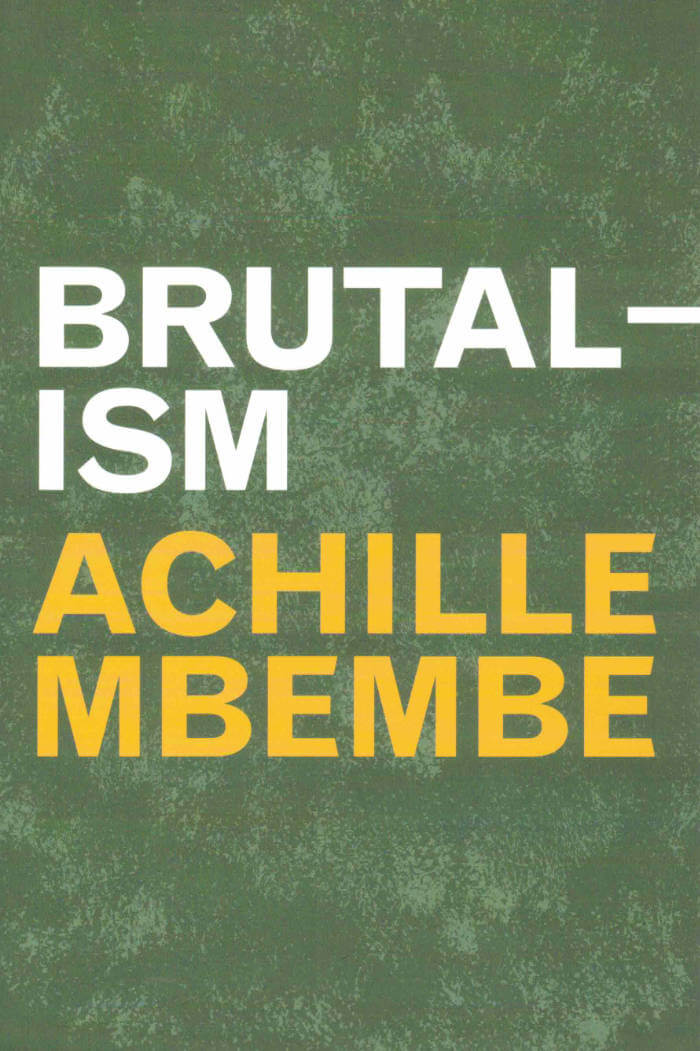
Brutalism
In Brutalism, eminent social and critical theorist Achille Mbembe invokes the architectural aesthetic of brutalism to describe our moment, caught up in the pathos of demolition and production on a planetary scale.
Just as brutalist architecture creates an affect of overwhelming weight and destruction, Mbembe contends that contemporary capitalism crushes and dominates all spheres of existence. In our digital, technologically focused era, capitalism has produced a becoming-artificial of humanity and the becoming-human of machines. This blurring of the natural and artificial presents a planetary existential threat in which contemporary society’s goal is to precipitate the mutation of the human species into a condition that is at once plastic and synthetic.
Mbembe argues that Afro-diasporic thought presents the only solution for breaking the totalizing logic of contemporary capitalism: repairing that which is broken, developing a new planetary consciousness, and reforming a community of humans in solidarity with all living things.

Logorrhea
The fruit of a long-term project, this artist's book focuses on the written word and language in Jean-Michel Wicker's work.
Since the 1990s, the work of French artist Jean-Michel Wicker (born 1970 in Riedisheim, lives and works in Berlin) has focused on all forms of production, including publishing, typography, performance, and gardening. Wicker is the founder of the publishing houses Le edizioni della luna, Nice, Le edizioni della china, Berlin, and Ballabella papers, Berlin. His recent solo exhibitions include Edouard Montassut, Paris (2017), Bergen Kunsthall (2015), Sandy Brown, Berlin (2015), Künstlerhaus, Stuttgart (2015), Cubitt, London (2014), New Theater, Berlin (2014), Artists Space, New York (2013), Kunsthalle Bern (2012), and KW Institute for Contemporary Art, Berlin (2010). He has also exhibited in group shows, including the Institute of Contemporary Arts, London (2014), Kunsthal Charlottenborg, Copenhagen (2011), and Kunsthalle Zürich (2011).

Hundred Zundert
Nel Aerts (b. 1987) moves in a freely, intuitive way between different media as painting, drawing, collage, performance and sculpture. Since a few years she focuses more often on the portrait-genre, which she visualises on paper or on wooden panels, with careful attention to the different qualities of each material. As such, she is creating a large collection (family almost) of posing subjects caught between abstract patterns and hard-edged figuration. The figures she portraits refer to both popular culture and her direct, everyday surroundings.
The self-portraits are tragicomic in the sense of the contrasts they evoke. Alternately they are desperate or funny, extra- or introverted, thought- or playful carved from wood or originated as a collage, but they are always introspective and self-relativistic.
In Hundred Zundert, “Nel Aerts evokes a visual rendezvous with Vincent van Gogh and sets the tone for the near one hundred drawings that would be made during her three-month residency at the Van Gogh House in Zundert. Rather than ‘following in the footsteps of Van Gogh’, Aerts is interested in examining the mud and earth around them by (literally) placing herself in the environment of Van Gogh’s youth. The resulting work is characterised by a deceptive interplay between formal simplicity and playfulness which belies a substantial complexity. (…) Nel Aerts’s working process is uncomplicated and free of any pretension: black ball pen (dozens), sheets of white A4 paper (hundreds) and spontaneous, almost naive line work (in seemingly infinite supply) are the building blocks of a story that is nevertheless rich in visual and intimate detail, a story that teeters between seriousness and playfulness, at once both comical and deeply emotive.” From: ‘Portrait of the Artist’, Grete Simkuté, in: Hundred Zundert.

The Error is Regretted
‘Corrections and Clarifications’ is an ongoing newsprint project by Anita Di Bianco, an edited compilation of daily revisions, retractions, re-wordings, distinctions, and apologies to print news from September 2001 to the present. In essence, a reverse chronological catalogue of lapses in naming and classification, tangled catchphrases, and patterns of misspeak and inflection.
Previous editions have examined the printed news media in the United States and United Kingdom, Germany, Austria and Switzerland, and other international press from Asia, Turkey, and the Balkans printed in English. The publication includes text contributions by Di Bianco and Francesco Gagliardi.
108 p, ills bw, 24 x 32 cm, hb, German/English

Ripcord
A novel about escape and connection, class, sex, and queer intimacy in the American Midwest.
The oldest story: an insider pretends to be an outsider and receives praise for his empathy and imagination and intelligence. Maybe some asshole even says bravery. An outsider pretends to be an insider, is exposed as a fraud, a liar, and burned to the ground.
In Ripcord, Nate Lippens continues his meditations on escape and connection, class, sex, and intimacy. Stuck in Milwaukee, the narrator cobbles together a living by bartending and catering weddings, enmeshed in a semiaffair with a younger, married man. Cruising apps while tallying his youthful romantic failures, he fantasizes about disappearance but finds both solace and frustration in his friendships with Charlie, an aging punk who was prominent in the 1990s Chicago queercore scene, and Greer, a painter who never broke through but continues making work.

This Is Not My Signature
A journey through the artist's work and life.
William Anastasi is the author of a prolific body of work. A major figure in conceptualism and in many respects one of its initiators, his trajectory cannot be solely confined to this chapter in the history of contemporary art. The book revisits, through the prism of multiple voices, the various aspects of an approach that unfolded with the use of complementary mediums. Drawing coexists with photography and "new" technologies, alongside objects, paintings, and installations. Within this corpus to be (re)discovered, sounds, images, and language, as well as artifacts, protocols, and processes, convey inquiries related to space and time, representation, and perception. With contributions from Dove Bradshaw, Chiara Costa, Béatrice Gross, Valérie Mavridorakis, Hélène Meisel, Sébastien Pluot, Julia Robinson, Robert Storr, and Erik Verhagen.
Edited by Erik Verhagen.
Texts by Dove Bradshaw, Chiara Costa, Béatrice Gross, Valérie Mavridorakis, Hélène Meisel, Sébastien Pluot, Julia Robinson, Robert Storr, Erik Verhagen.

Christ’s Cunt
Christ’s Cunt is a book of poems that has nothing to do with the Christian God. It has everything to do with the pure insanity of the Christ figure, the hedonism of Christ, and the bloody images and symbols of “His” birth. Washing the feet of the Whore; turning the other cheek; starvation, body mutilation, transformation, wine, miracles, orifices, bleeding. It’s pure rave. This is the first era in history in which we can do medical procedures to change a person’s gender. How monumental that is in human civilization, how monstrous, how absurd this would appear for people in the past. For me, to get a cunt is as monumental an act in the course of history as when Christ first let “him” self be nailed to a phallic plank. I love it.

My Mother My Home
Who claims abstraction? What are the limits of abstraction? Are statelessness, dislocation and feelings of (un) belonging embodiments of an abstracted self that is in itself a work in progress? How could performance art—an artistic practice that places significant importance on presence and legibility of form—transgress into the realm of the abstract and the illegible in an effort to protect the artist’s likeness while shedding light on what it means to be in their body in relation to this world?
Chipo Chipaziwa’s My Mother My Home establishes itself as a query on the aspects of belonging and the artist’s own personhood that acts as the foundation of her practice. The question of where one’s personhood begins and ends within an artwork has appeared to be ever prevalent within the realm of visual art and is more relevant within the canon of performance art.
Writers: Chipo Chipaziwa, Denise Ferreira Da Silva, Olumoroti George
Contributing Artists: Margaret Joba-Woodruff, Sophia Lapres, and David Ezra Wang
Edited by Katrina Geotjen

Mother issues and the birth of an image / Complexes de mère et la naissance d'une image
In this essay, written in English and French, Vilnius-based artist Anastasia Sosunova unfolds her research on the history of printing, from Daniel Hopfer’s etchings to underground printers from the Soviet era, and connected the printing “matrix” to the mother figure, referencing Ocean Vuong and Guadalupe Nettel.
Ocean Vuong writes, “I’m not a monster. I’m a mother”; Jeanette Winterson: “She was a monster but she was my monster.” And thus, the monster I refer to is the one that gives birth to the prints that shape the tongues, fears, and beliefs of vast groups of people. Books of marvels and beasts, now considered emblems of a dark age of ignorance and superstition, proliferated in the 15th and 16th centuries thanks to emergent printing technologies and the influential naturalists they helped create. In the illustrations of scientific explorations by Fortunio Liceti, Athanasius Kircher, or Ulisse Aldrovandi, the lines between fact and fiction were irrelevant as they were impossible to discern.
This chapbook is published as part of the project “Mi-Monstre Mi-Livre,” organised by After 8 Books, Ariel Ink, Publication Studio Paris and Six Chairs Books, during a residency at Aperto, Paris, in the framework of the Lithuanian Season in France.

Pipi champagne
À travers ses trajets quotidiens dans les transports parisiens, Maxime décrit ses aventures homosexuelles réelles et fantasmées. On découvre dans ses poèmes ses désirs de vengeance contre la bourgeoisie, la famille, ses explorations diurnes en manif et nocturnes dans les clubs. Maxime écrit un journal en poèmes de ses déambulations urbaines dans lesquelles il explore les recoins de ses désirs. Ses projections romantiques et ses rêves politiques à la périphérie des villes, des normes nous font imaginer une révolution jouissive. L’ouvrage couple deux recueils de Maxime Vignaud, placés tête-bêche dans le livre, comme deux revers d’une même pièce, ou comme deux corps qui dorment en cuillère.